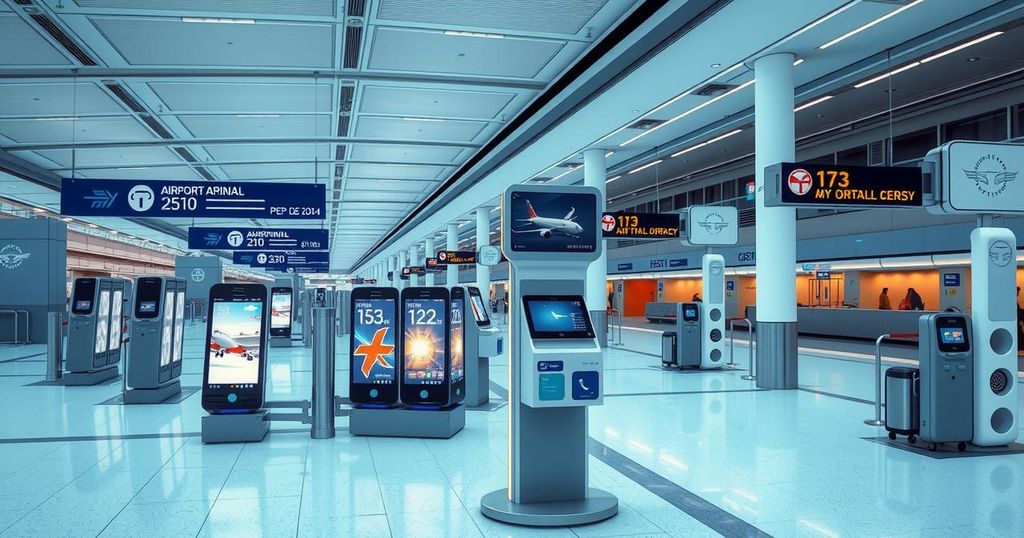India’s Aadhaar is the world’s largest biometric identification system, serving over 1 billion residents. Launched in 2009, it offers high accuracy and efficiency in identity verification, while aiding public welfare programs. Despite its advantages, challenges such as data privacy, algorithmic bias, and surveillance concerns remain significant.
Biometric identification has become a global benchmark for secure authentication and identity verification. India’s Aadhaar card, initiated in 2009, is the world’s largest digital identification system, now serving over 1 billion individuals. Each card features a unique 12-digit number and serves as proof of identity and address, illustrating the shift toward secure digital identification.
The advantages of biometric systems are substantial. Firstly, Aadhaar’s accuracy nearly reaches 100%, leading to significant cost savings and efficiency improvements. Secondly, its mobile-enabled design aids public welfare programs, especially for those without official documentation. Thirdly, it streamlines service delivery, allowing pensioners to submit life certificates online and linking banking services with other ID documents, such as PAN cards. Lastly, it has modernized governance, reportedly saving at least $11 billion through efficiency gains and enhancing public security.
The shift towards biometrics has transitioned from a conceptual stage to a mainstream practical application seen in everyday activities. It is widely used in unlocking smartphones, streamlining immigration processes at airports, and securing banking transactions. Aadhaar’s facial authentication system, as noted by Shri Bhuvnesh Kumar, CEO of UIDAI, is now significantly impacting residents’ lives and simplifying their daily routines.
The rapid advance of biometric systems stems from technological convergence. Factors contributing to this include the rise of smartphones and digital services, integration of facial recognition in financial applications, workplace attendance systems, and electronic Know Your Customer (eKYC) protocols. Additionally, the availability of affordable processing units and standard biometric devices has facilitated the expansion of these technologies.
Facial recognition technology is crucial to India’s governance modernization strategy. Its widespread implementation supports public service delivery, strengthens national security, and relies on technological advances that drive the need for secure, efficient digital infrastructures. According to a study in the International Journal of Computer Applications (2021), biometric systems achieved high accuracy rates, making them more reliable than traditional password or ID card methods.
Users favor biometric systems for their speed and hygiene, attributes which gained importance during the pandemic. The FIDO Alliance’s Biometric Performance Study (2022) indicated users experienced quicker access with biometric methods versus conventional logins. This efficiency also extends to the Aadhaar initiative, which has registered over 1.4 billion residents using multiple biometric modalities, gaining recognition from the World Bank as a model of digital inclusion.
Incorporating facial recognition into India’s public security infrastructure advances law enforcement’s capabilities. Centralized Facial Recognition Systems implemented by the NCRB aid in identifying suspects, locating missing persons, and managing large gatherings. Airports and railways have similarly adopted this technology to enhance security while expediting the processing of passengers.
Despite the advantages, challenges persist. India’s biometric initiatives are part of the Digital India initiative, targeting scalable digital public infrastructure. However, biometric systems raise concerns around data privacy and security. Studies have shown compromised biometric data cannot be altered like passwords, with examples like the Biostar 2 breach highlighting this vulnerability. Additionally, algorithmic bias poses a risk, as found in the MIT Media Lab’s 2018 study, which revealed high error rates in certain demographics. Mass surveillance and consent issues also provoke privacy concerns.
In conclusion, biometric facial recognition emerges as a transformative force in governance, security, and digital identity systems. India’s Aadhaar initiative showcases how such technologies can catalyze inclusive progress and innovation. However, as biometric systems integrate into daily life, a balance between technological advancements and ethical considerations, alongside regulatory oversight, is crucial for their sustainable success in the future.
In summary, India’s Aadhaar biometric system has revolutionized secure identity verification while enhancing public services and security. Despite its transformative potential, the adoption of biometric technologies must address privacy, data security, and algorithmic bias concerns. Ensuring a framework for ethical implementation will be vital as biometric identification continues to evolve and integrate into everyday life.
Original Source: gulfnews.com








